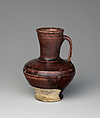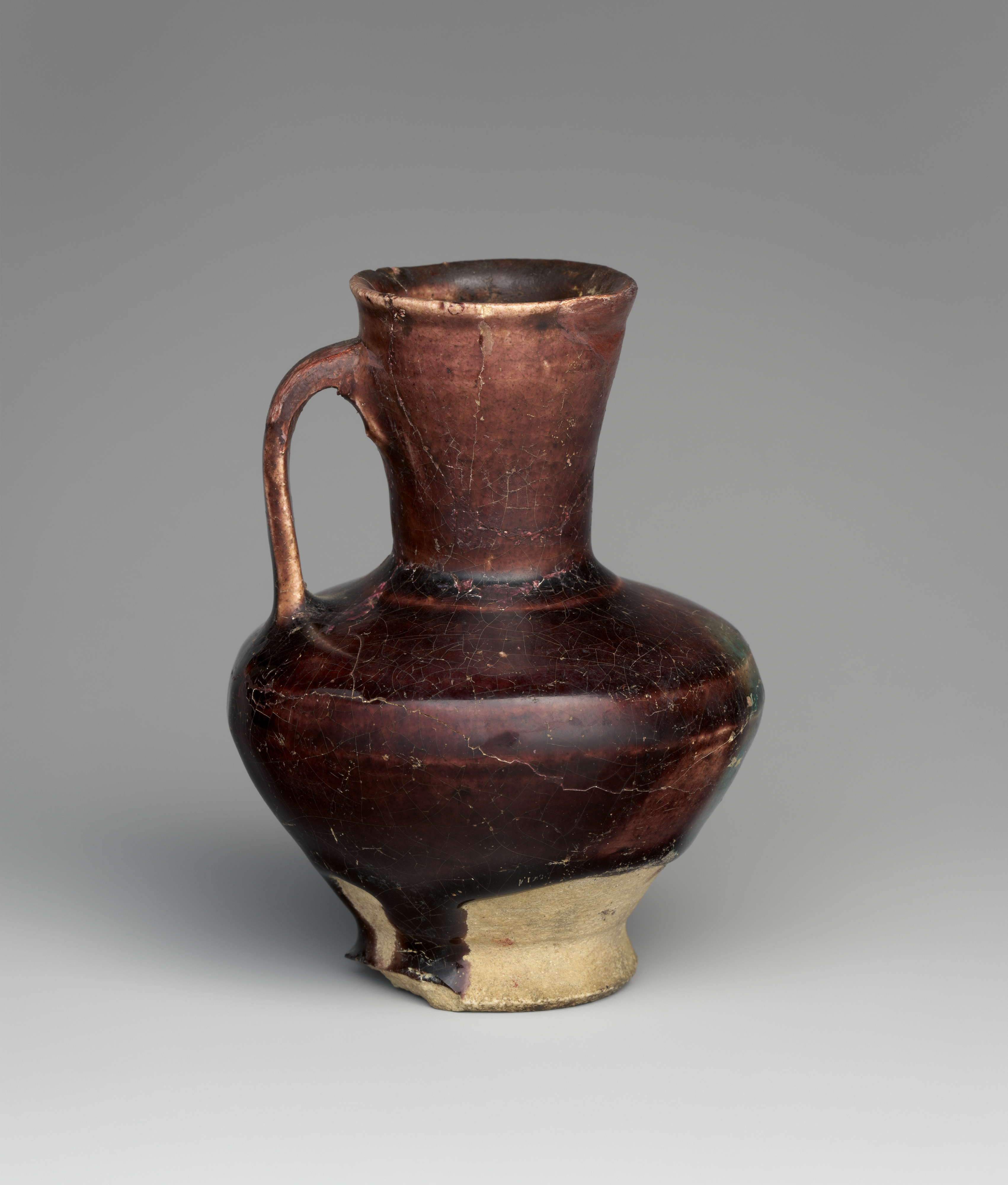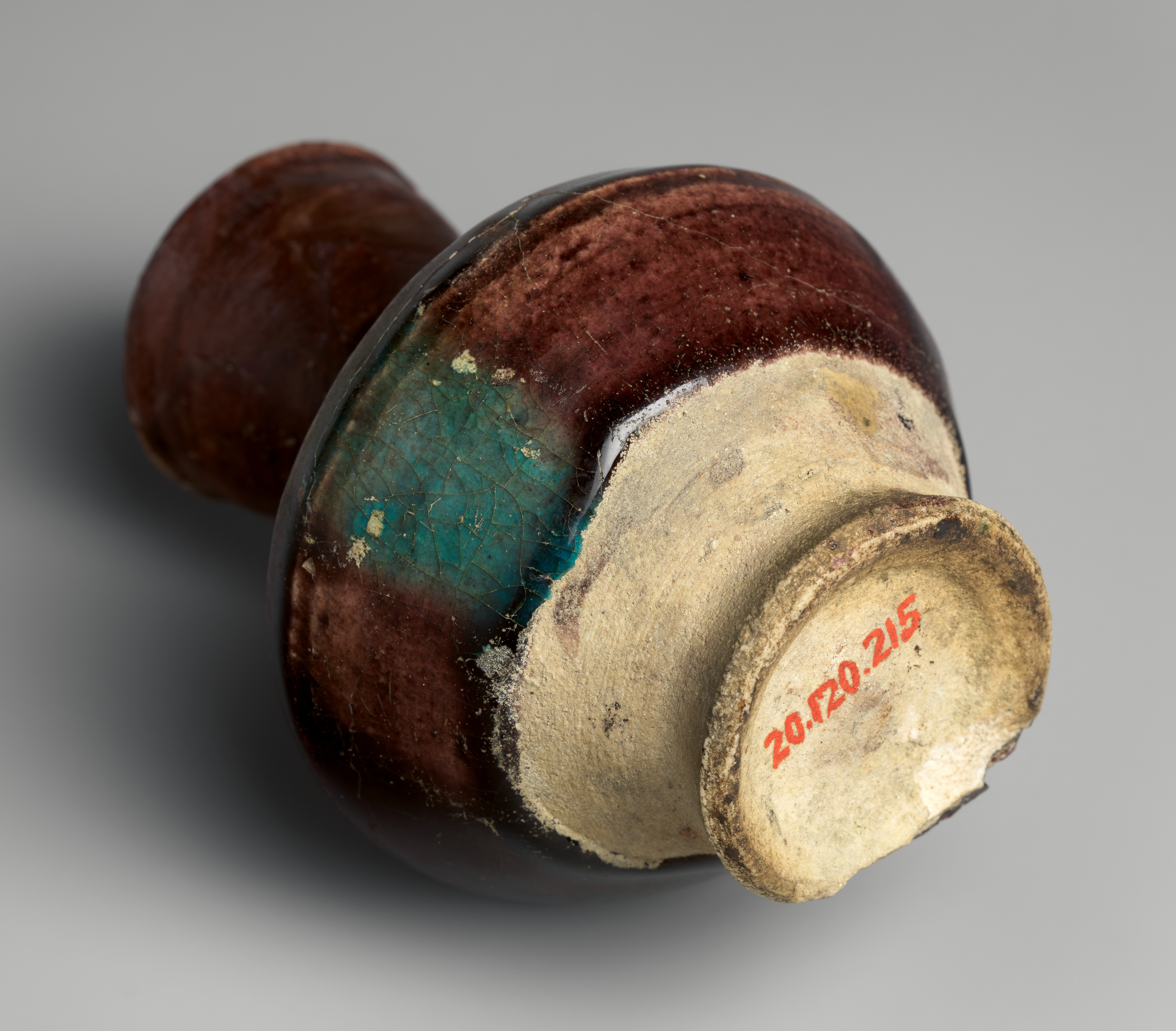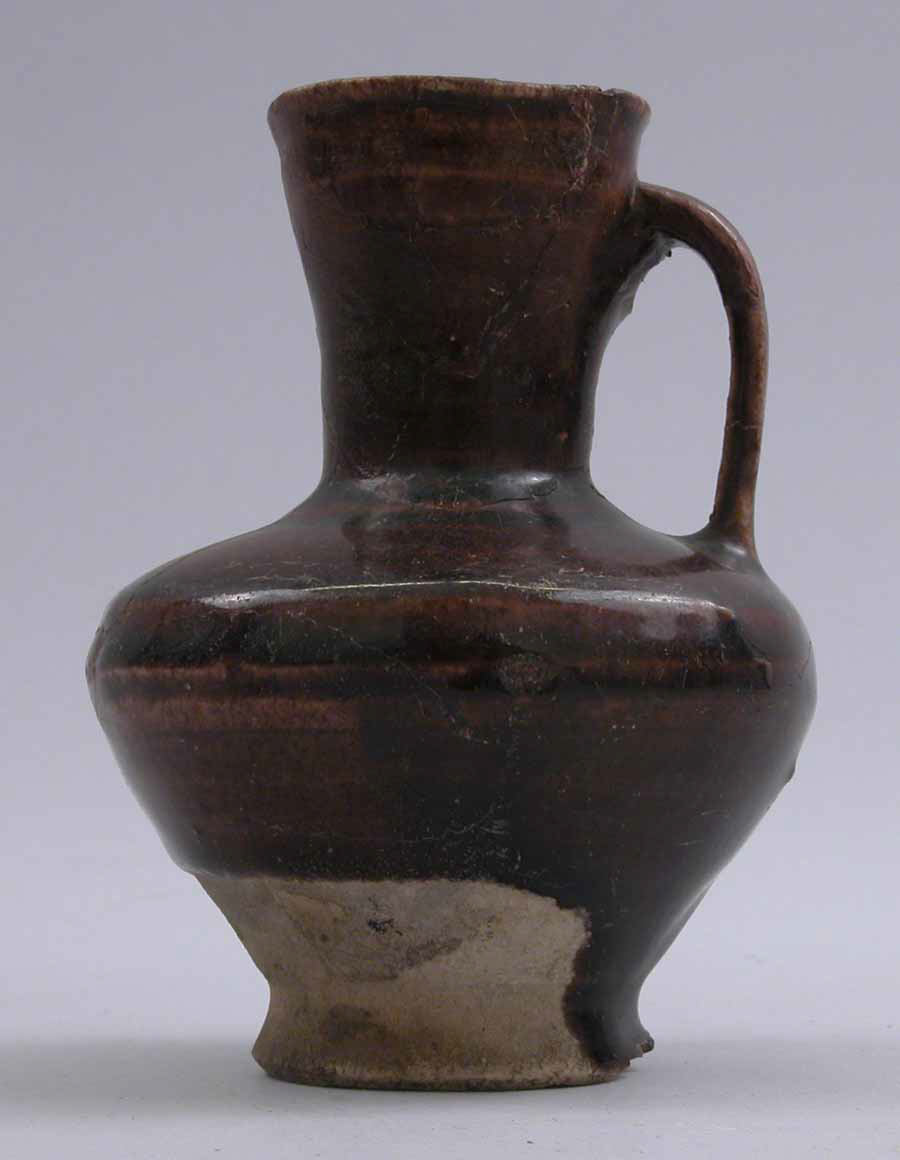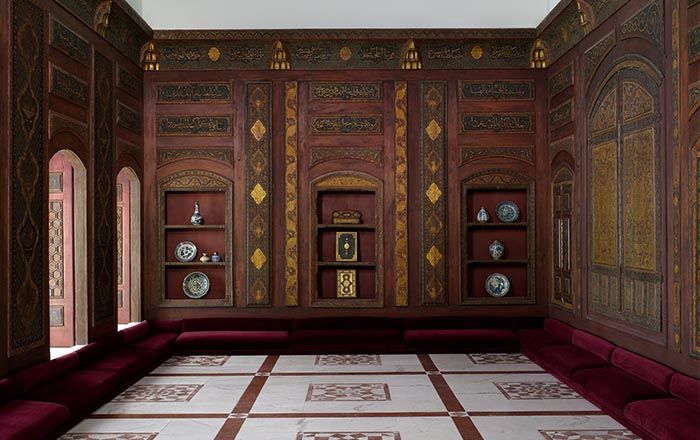Miniature Ewer
Not on view
The miniature ewer was most probably made in central or northern Iran in the 11th or 12th century, at a time when potters were experimenting with new technologies such as stonepaste. Early stonepaste vessels were mostly monochrome-glazed, in turquoise, purple, white, blue, with the occasional splash of a different color. They display a range of inventive shapes, such as small bowls and dishes with scalloped, lobed, and variably decorated rims, and miniature vessels like this object.
The splash of turquoise on the otherwise dark purple coating of the ewer is a rather rare occurrence, while the peculiar obliquely-cut ring-foot is a technical hallmark of the earliest stonepaste vessels from Syria to Iran.
The ewer came to the Museum in 1920 together with a large group of objects bequeathed from the collection of the antique dealer William Milne Grinnell.
This image cannot be enlarged, viewed at full screen, or downloaded.
This artwork is meant to be viewed from right to left. Scroll left to view more.
